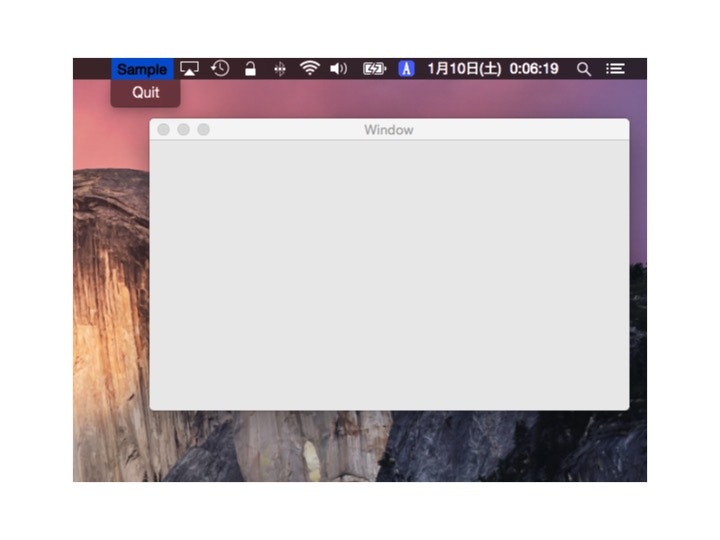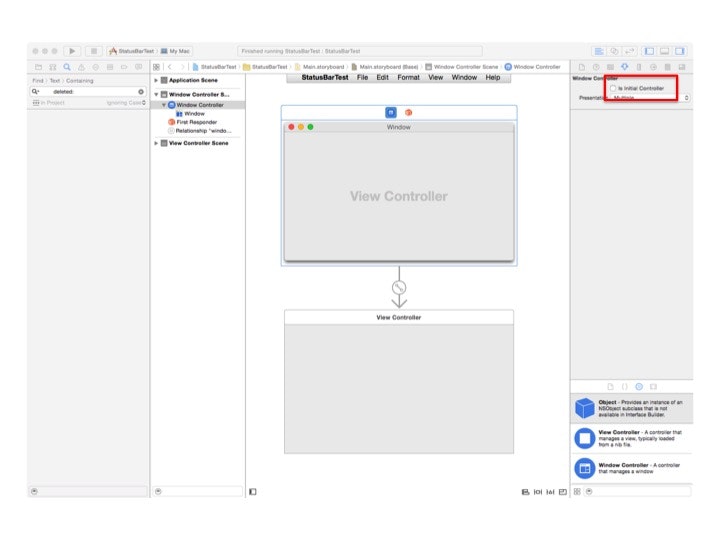OS Xのステータスバーに常駐するアプリケーションを作成します。
ステータスバーは通知センター、検索、時計などがある右側の領域のことです。
AppDelegate.swiftにコードを書き足します。
「Quit」というメニューアイテムを作成します。
このメニューアイテムがクリックされるとアプリケーションが終了します。
AppDelegate.swift
import Cocoa
@NSApplicationMain
class AppDelegate: NSObject, NSApplicationDelegate {
var statusItem = NSStatusBar.systemStatusBar().statusItemWithLength(-1)
func applicationDidFinishLaunching(aNotification: NSNotification) {
// Insert code here to initialize your application
let menu = NSMenu()
self.statusItem.title = "Sample"
self.statusItem.highlightMode = true
self.statusItem.menu = menu
let menuItem = NSMenuItem()
menuItem.title = "Quit"
menuItem.action = Selector("quit:")
menu.addItem(menuItem)
}
func applicationWillTerminate(aNotification: NSNotification) {
// Insert code here to tear down your application
}
@IBAction func quit(sender: NSButton) {
NSApplication.sharedApplication().terminate(self)
}
}
ステータスアイテムを作成する箇所をObjective-Cで記述すると以下のようになります。
AppDelegate.m
[[NSStatusBar systemStatusBar] statusItemWithLength:NSVariableStatusItemLength];
SwiftでNSVariableStatusItemLengthまたは、CGFloat(NSVariableStatusItemLength)と記述してコンパイルすると、以下のようなエラーがでて失敗するため-1を指定しています。
Undefined symbols for architecture x86_64:
"_NSVariableStatusItemLength", referenced from:
__TFC13StatusBarTest11AppDelegatecfMS0_FT_S0_ in AppDelegate.o
ld: symbol(s) not found for architecture x86_64
clang: error: linker command failed with exit code 1 (use -v to see invocation)
実行すると、ステータスバーに「Sample」という項目が表示されます。
このときウィンドウも表示されるので、このウィンドウを非表示にします。
Main.storyboardのWindow Controllerを選択して、「Is Initial Controller」のチェックを外します。
最後にInfo.plistにキーを追加します。
<key>LSUIElement</key>
<true/>
このキーを追加すると、そのアプリケーションはDockと強制終了ウィンドウに表示されなくなります。


